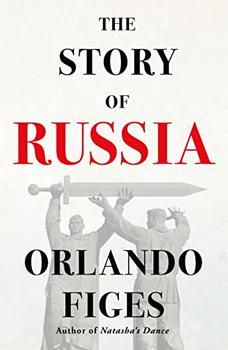Summary | Excerpt | Reviews | Beyond the Book | Readalikes | Genres & Themes | Author Bio

These views were challenged in the nineteenth century by philologists and archaeologists. Often motivated by nationalist pride in Russia's ancient Slav culture, they looked for evidence that underlined its advanced social life in the first millennium. The anti-Normanists, as they were called, argued that the Rus were not from Scandinavia (they were not mentioned in the Old Norse sources or sagas) but were Slavs, whose name, they argued, had appeared in Greek sources from the second century and in Arab from the fifth. The Rus homeland, they maintained, was in Ukraine and was marked by Slavic river names (Ros, Rosava, Rusna, Rostavtsya and so on). Excavations of their settlements revealed that they were built in a defensive circle, in stark contrast to the Vikings' open settlements, and that they had attained a high level of material culture from their contacts with Hellenic, Byzantine and Asiatic civilisations long before the Vikings had arrived.
The fortunes of the anti-Normanists rose in line with the influence of nationalism on the Russian state. They peaked in Stalin's time, particularly after 1945, when a Great Russian chauvinism, boosted by the victory over Nazi Germany, was placed at the heart of Soviet ideology. The ethno-archaeology of early Slavic settlements became heavily politicised. Massive state investments were made in excavations whose remit was to show a 'Slavic homeland' stretching from the Volga River in the east to the Elbe River in the west, from the Baltic in the north to the Aegean and Black Seas – in other words the area that Stalin claimed as a Soviet 'sphere of influence' during the Cold War. The idea that Russia owed its origins to any foreign power – least of all to the 'Germanic' Vikings – became inadmissible. Scholars who had dared to suggest so were forced by the Party to revise their work.
The Soviet view of Russia's origins was thus entangled in a concept of ethnicity, in which the ethnos was regarded as an ancient core of national identity, persisting throughout history, despite changes in society. At a time when Western scholars were coming to the view that ethnic groups were modern intellectual constructions, invented categories imposed on complex social groups, their Soviet counterparts were analysing them as primordial entities defined by biology. Through the study of ethnogenesis they traced modern Russia to a single people in the Iron Age, claiming that the Russians were descendants of the ancient Slavs.
This approach resurfaced with an even greater force after the collapse of the Soviet Union, when Russian, Ukrainian and Belarusian nationalists competed with each other for an ethnic claim of origin from the Kievan legacy. Here was Putin's purpose in his speech on the unveiling of the Moscow monument to Prince Vladimir. Asserting Russia's inheritance from Kiev, he invoked the old imperial myth that the Russians, the Ukrainians and the Belarusians were historically one people, three ethnic sub-groups of a single nation, thus establishing a 'natural' sphere of influence for today's Russia in its original 'ancestral lands'. History of course is more complex – even if it is a story too.
* * *
Russia grew on the forest lands and steppes between Europe and Asia. There are no natural boundaries, neither seas nor mountain ranges, to define its territory, which throughout its history has been colonised by peoples from both continents. The Ural mountains, said to be the frontier dividing 'European Russia' from Siberia, offered no protection to the Russian settlers against the nomadic tribes from the Asiatic steppe. They are a series of high ranges broken up by broad passes. In many places they are more like hills. It is significant that the word in Russian for a 'hill' or 'mountain' is the same (gora). This is a country on one horizontal plain.
On either side of the Urals the terrain is the same: a vast steppe, eleven time zones long, stretching from the borderlands of Russia in the west to the Pacific Ocean in the east. This territorial continuum is made up of four bands or zones that run in parallel from one end to the other, more or less. The first of these zones, around one-fifth of Russia's land mass, is above the Arctic circle, where the treeless tundra remains under snow and ice for eight months every year. Nomadic reindeer-herders, fur- and walrus-hunters were the only people to inhabit these regions until the twentieth century, when the discovery of coal, gold, platinum and diamonds in the permafrost led to the Gulag's colonisation of the Arctic zone, where 2 million Russians live today. Most of them are descendants of the Gulag's prisoners.
Excerpted from The Story of Russia by Orlando Figes. Copyright © 2022 by Orlando Figes. Excerpted by permission of Metropolitan Books. All rights reserved. No part of this excerpt may be reproduced or reprinted without permission in writing from the publisher.
Your guide toexceptional books
BookBrowse seeks out and recommends the best in contemporary fiction and nonfiction—books that not only engage and entertain but also deepen our understanding of ourselves and the world around us.